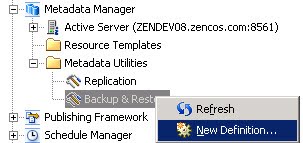SAS Learning Post
Technical tips and tricks from SAS instructors, authors and other SAS experts.
A user who is a member of the "SAS Administrators" group and has been granted the role "Management Console: Advanced" can create a Metadata Backup job via SAS 9.2 Management Console. Right Click on 'Backup and Restore' Task under 'Metadata Utilities'. Then select the Backup task created and choose either
The SAS 9.2 XML engine is very very very slick. I created an xml map to generate a dataset from xml generated during a metadata getobjects job to then run call execute statements for a proc metalib update. "Wait, you did what??!@#?&" you ask? Here are my simple steps. This
I’ve never found a great user guide, not to say that one doesn’t exist. You should be able to schedule any type of executable/job like a batch file from using the Platform LSF client tools (packaged with the server tools). You can also use command line executables like bsub and
The data table creation date is sometimes necessary, say in the footnote of your stored process. Included below is a sample to retrieve this date from the file system. /*Open the dataset*/ %let dsid=%sysfunc(open(sashelp.shoes)); data _null_; /*grab the CRDTE function*/ ddate=%sysfunc(attrn(&dsid;,CRDTE )); /*Format in DDMONYY*/ call symput('ddate', put(ddate, dtdate9.)); run;
So you have installed the SAS System, and you can check what is licensed with the proc setinit command, but what if something hiccuped in the install. Or your supporting (I mean validating) someone else's install and you need to quickly see what is available? Included below is some 'found'
